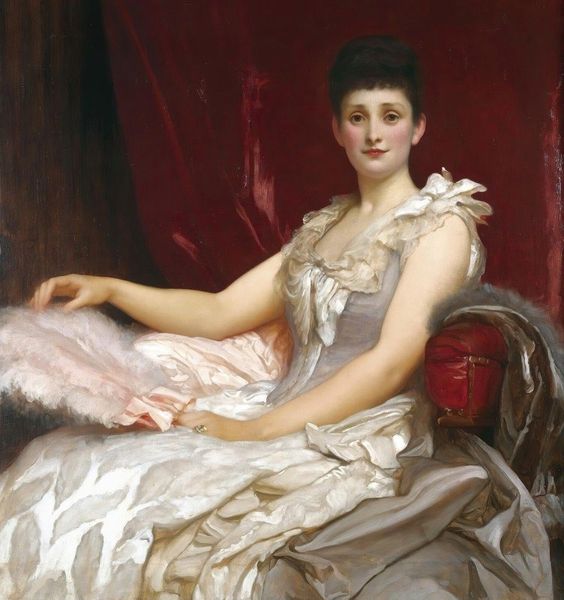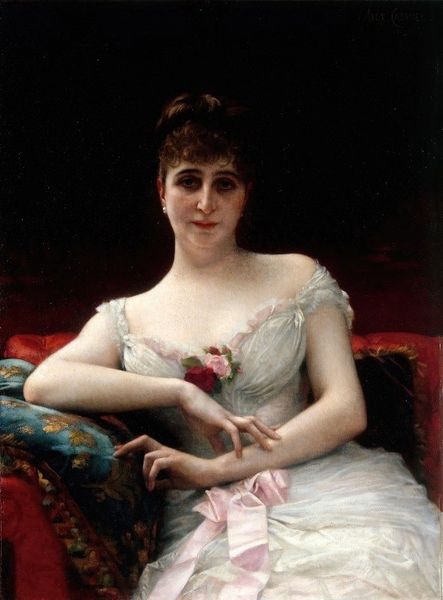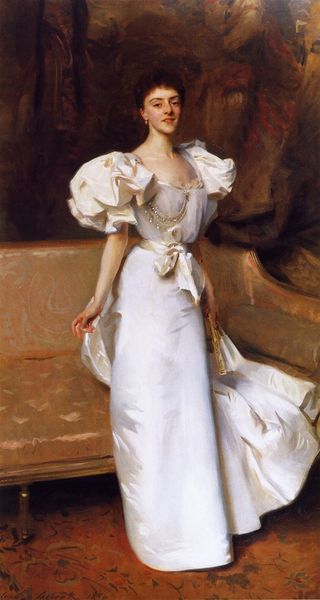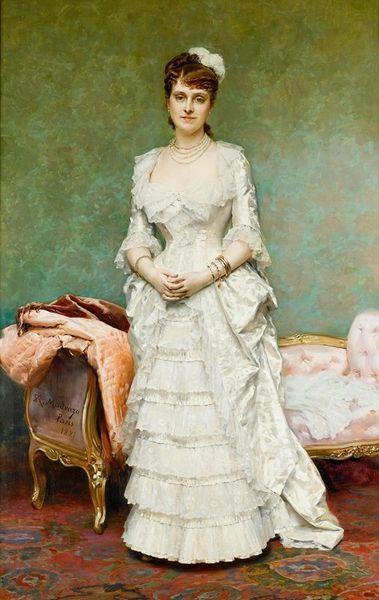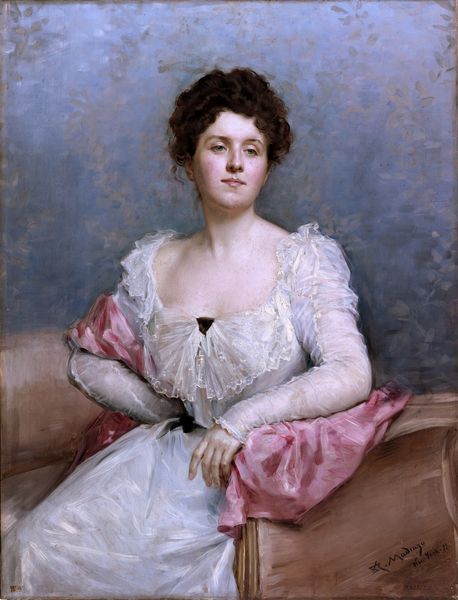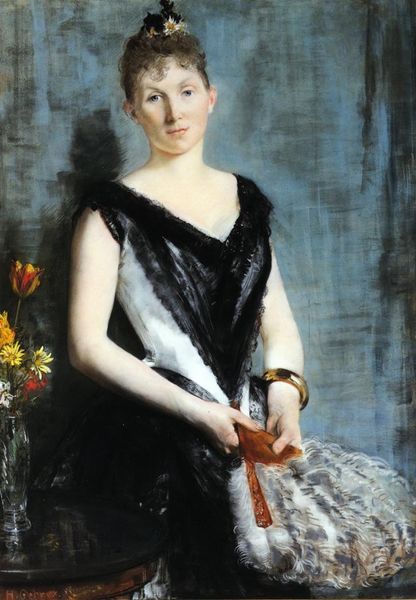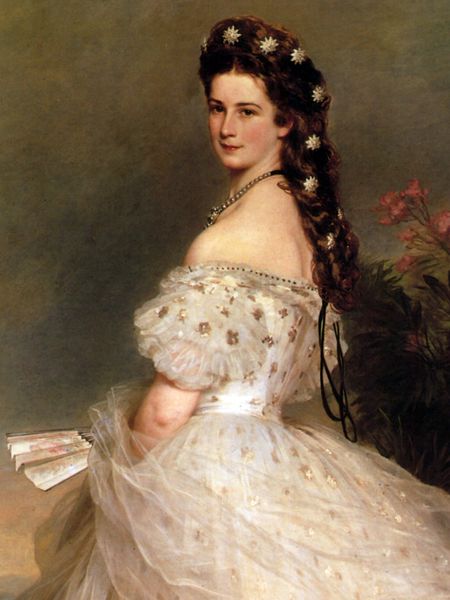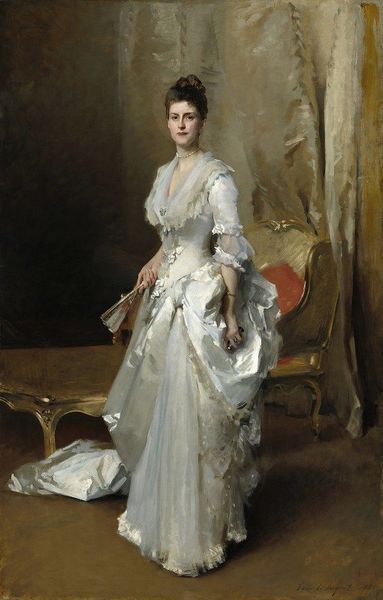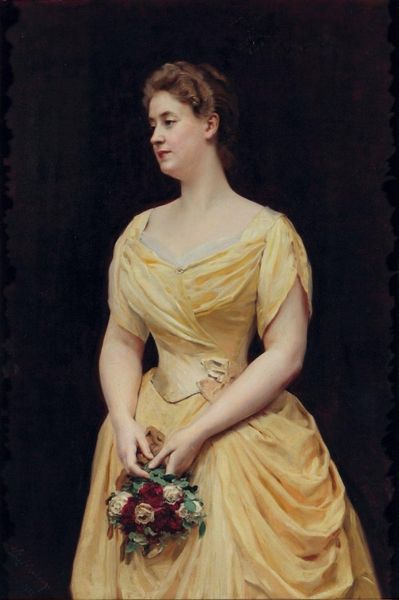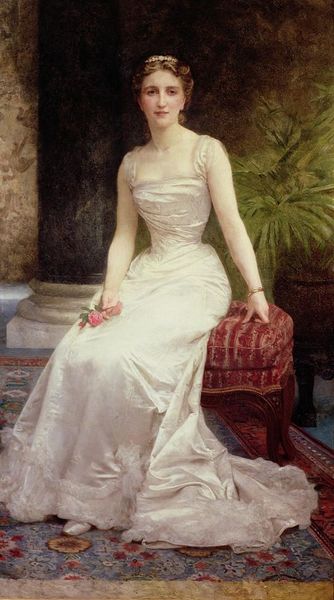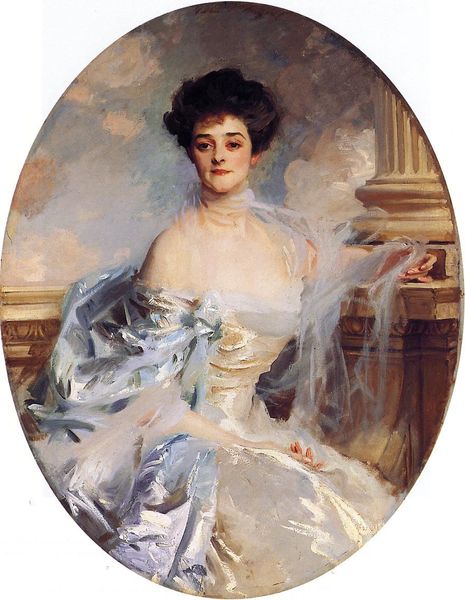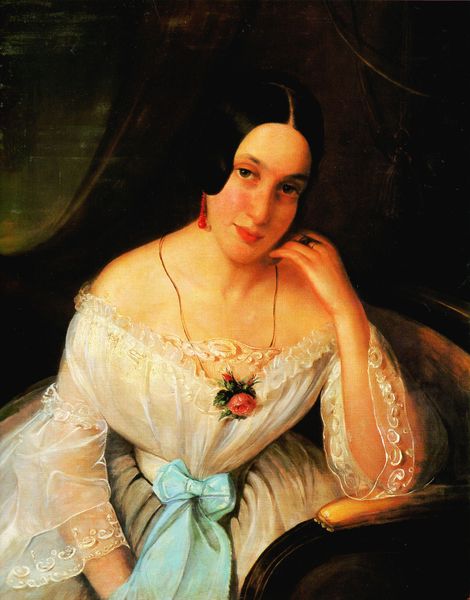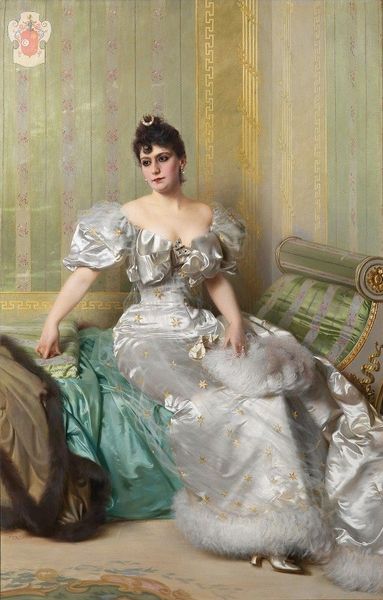
Madame la Comtesse de Cambaceres 1895
0:00
0:00
williambouguereau
Seattle Art Museum (SAM), Seattle, WA, US
Dimensions: 90 x 121 cm
Copyright: Public domain
Curator: Looking at this work by William Bouguereau, painted in 1895, titled "Madame la Comtesse de Cambacérès", the subject projects a regal serenity, doesn’t she? The portrait embodies late 19th-century academic painting. Editor: It’s visually stunning. My first thought is the whiteness is dazzling. The lace and the silk are rendered with such meticulous detail that they practically shimmer. It's a bit ethereal and otherworldly. Curator: Yes, Bouguereau really captured textures masterfully, and the whiteness serves multiple purposes. It signals her elite status and wealth and acts as a canvas to subtly reflect light and the soft blush tones from her skin, enriching the image with nuance. White traditionally speaks to innocence, which could be a deliberate choice about her public image. Editor: It’s interesting to consider that, the loaded nature of presenting innocence through visual means during this time. Were these portraits strategic statements? Curator: Absolutely, portraiture was closely intertwined with the sitter's place in the sociopolitical hierarchy. This Comtesse de Cambacérès surely understood the power of her public presentation, how dress and painterly style contributed to perceptions of her and her role in society. The symbolism could include a sense of dynastic continuity by conveying virtue and stability, reinforcing her family's historical influence. Editor: Looking again at her ornate jewelry and the elaborate floral arrangements embellishing the gown, they amplify this sense of constructed image. All those details must have spoken volumes about social standing. Yet, there's also a vulnerability in her gaze, which prevents it from just being a status symbol. It hints at the pressures, the prescribed roles she may have had to navigate. Curator: Indeed. Bouguereau’s skill, while technically impressive, doesn’t only depict wealth, but the societal role the Comtesse inhabited, the image she was meant to project and the soft inner self peeking through that carefully constructed facade. Editor: It’s fascinating to dissect such a meticulously crafted piece, especially when it reminds us of the performative aspects of identity, the tension between individual experience and public representation that still resonate today. Curator: Absolutely. It encourages us to reflect on the relationship between representation and the self, between image and reality in every portrait we encounter, across the ages.
Comments
No comments
Be the first to comment and join the conversation on the ultimate creative platform.
